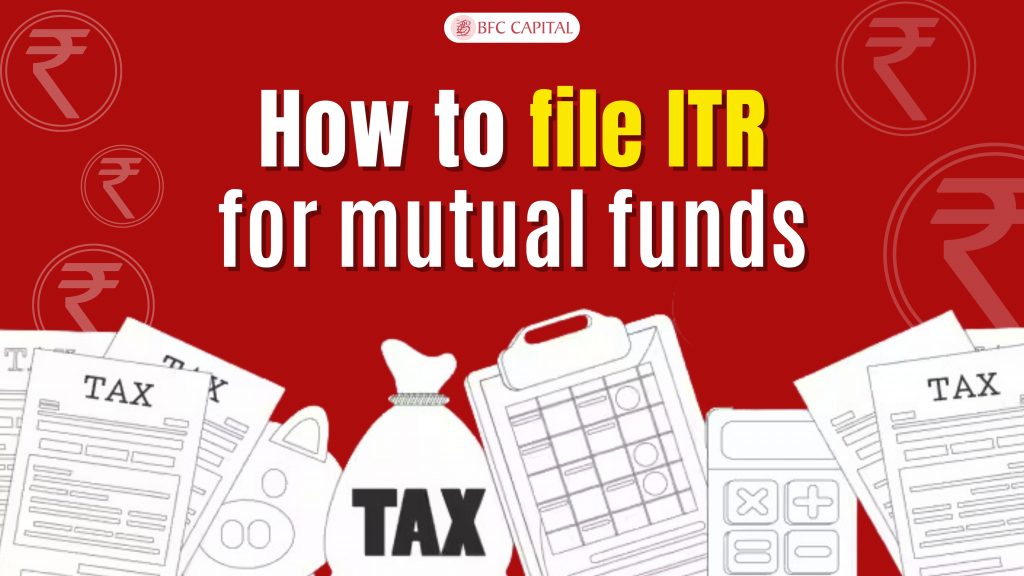
Following section 139 (1) of India, anyone whose total earning in the last year surpasses the tax freedom bracket should file their ITR or income tax returns. E-filing is a procedure via which individuals file their income tax returns digitally.
As a taxpayer, you can search for professional assistance or file your taxes by registering with the income tax department platform. While the last date for e-filing income returns are different for different entities you can file ITR on income tax platform only.
Choosing the Correct ITR Form
- ITR-1 (Sahaj): This form is typically used by salaried individuals whose income sources are limited to salary, pension, and interest income. However, ITR-1 is not suitable if you have earned capital gains from mutual funds.
- ITR-2: Since you have capital gains, you should use ITR-2. This form is for individuals who do not have income from a business or profession but have other sources of income like capital gains, income from property, etc.
Steps to File ITR with Mutual Fund Capital Gains
1. Evaluate Capital Gains:
-
- Short-term Capital Gains (STCG): Gains from mutual funds held for less than 36 months. STCG is taxed at a rate of 15%.
- Long-term Capital Gains (LTCG): Gains from mutual funds held for more than 36 months. LTCG exceeding ₹1 lakh is taxed at 10% without indexation benefits or 20% with indexation benefits.
2. Obtain Capital Gain Reports:
-
- Your mutual fund provider will issue a statement summarizing your capital gains. This includes details of each transaction, purchase price, sale price, and the corresponding gain.
3. Download and Fill ITR-2:
-
- Visit the Income Tax Portal: Go to www.incometax.gov.in.
- Download ITR-2 Utility: Navigate to ‘Downloads’ and select the ITR-2 form for the relevant assessment year.
- Fill Out the Form: Enter your personal details, income details, and information related to capital gains in the appropriate sections.
4. Report Capital Gains:
-
- Schedule CG (Capital Gains): In ITR-2, fill out Schedule CG to report your capital gains.
- Part A: For short-term capital gains.
- Part B: For long-term capital gains.
- Schedule CG (Capital Gains): In ITR-2, fill out Schedule CG to report your capital gains.
5. Calculate Tax:
-
- Use the details from your capital gain report to calculate the tax due. Ensure that you apply the correct tax rate based on whether your gains are short-term or long-term.
6. Validate and Generate XML:
-
- After filling in all the details, use the ‘Validate’ option to check for any errors. Once validated, generate the XML file.
7. Upload the XML File:
-
- Log in to the e-filing portal and go to ‘e-File’ > ‘Income Tax Return’.
- Select ITR-2, and upload the XML file you generated.
8. Verify Your Return:
-
- Choose one of the verification methods: Electronic Verification Code (EVC), Aadhaar OTP, or by sending a signed ITR-V to the CPC.
Documents Needed For Income Tax Filing
Here’s a simple checklist to help you get ready for filing your income tax:
- Bank Info and PAN: Have your bank details and PAN number ready.
- Work and Rent Documents: Collect your pay slips, rent receipts (for claiming house rent allowance), and Form 16 from your employer.
- Address Proof and Property Info: Collect documents proving your address, details about co-owners if any, their PANs, and information about your property (like construction date or purchase date). Also, include a certificate for home loan interest if applicable.
- Stock and Mutual Fund Info: Get statements for any stock trading, capital gains, and mutual fund investments. Include details like purchase prices and sale prices.
- Interest Income: Report any income from interest, including proof for tax-saving bonds and corporate bonds.
Make sure you have all these documents before you start filing your tax return.
Mandate for e Filing in Income Tax
You can make use of your Aadh ar card to file your income tax return when you don’t own a Permanent Account Number. Moreover, when applying for a new PAN, you must give your Aadhar Card.
Individuals who file their returns by making the use of their Aadhar card will be issued a PAN after their demographic information is received from the Unique Identification Authority of India, following the next income tax guidelines (UIDAI).
The new rule was incorporated by the Government of India to optimize tax compliance while making the process of tax payment simpler for taxpayers. At present, taxpayers must give their PAN while filing their taxes. However, you will be required to connect your Aadhaar and PAN to file your taxes.
How to Check the eReturn eFill Status
Follow the steps which are mentioned below to check the Status of the income tax eFiling using the acknowledgement number:
Step 1: Visit the Income Tax Department website at https://www.incometax.gov.in/iec/foportal
Step 2: Choose the ‘Income Tax Return (ITR) Status’ option.
Step 3: Fill in the PAN, acknowledgement number, and captcha code, then click the ‘Submit’ button.
Here you go, now, the Status will be shown on the screen.
Penalty for Late Filing
When you do not file the ITR by the due date, the Central Board of Direct Taxes (CBDT) implements a penalty. The highest amount of late e-filing is Rs 5,000. The punishment is imposed under Section 234F.
Advantages of E-Filing of Income Tax
The Government of India has made e-filing of income tax returns inescapable. The method is much easier than the former paper filing process.
The following are the advantages of ITR filing or income taxes virtually –
- Every year, the due date for e-filing income tax returns is July 31st. If the user submits it one or two months before the due date, they will be allowed to get the assignment faster and with less crowding, as servers tend to become overloaded as the due date comes closer.
- If you don’t file your income tax return on time, you’ll have to give a penalty for an extra day until you file. So, filing your tax return early helps you avoid these extra charges.
- Digital filing of tax returns enables the individual to maintain a good record of all financial interactions with the Income Tax Department.
Final Words
Filing your income tax return digitally is an easy and fast process that saves from extra penalties. To make the process even more simple and easy, get expert help from BFC Capital.
To learn more about mutual funds, contact us via Phone, WhatsApp, Email, or visit our Website. Additionally, you can download the Prodigy Pro app to start investing today!
Disclaimer – This article is for educational purposes only and by no means intends to substitute expert guidance. Mutual fund investments are subject to market risks. Please read the scheme-related document carefully before investing.

Assistant Vice President – Research & Analysis
Akash Gupta heads the Research & Analysis department at BFC CAPITAL, where he combines in-depth market insights with strategic analysis. He holds multiple certifications, including:
- NISM-Series-XIII: Common Derivatives Certification
- NISM-Series-VIII: Equity Derivatives Certification
- NISM-Series-XXI-A: Portfolio Management Services Certification
- IRDAI Certification
With his expertise in equity, derivatives, and portfolio management, Akash plays a key role in providing research-backed strategies and actionable insights to help clients navigate the investment landscape.







Name: What is the Expense Ratio in a Mutual Fund? Formula and Calculation - BFC Capital- Blogs : All Financial Solutions for Growing Your Wealth
says:[…] Also, check out our recent post on: “How to File Income Tax Return (ITR) for Mutual Funds on New Tax Portal – 2024“ […]